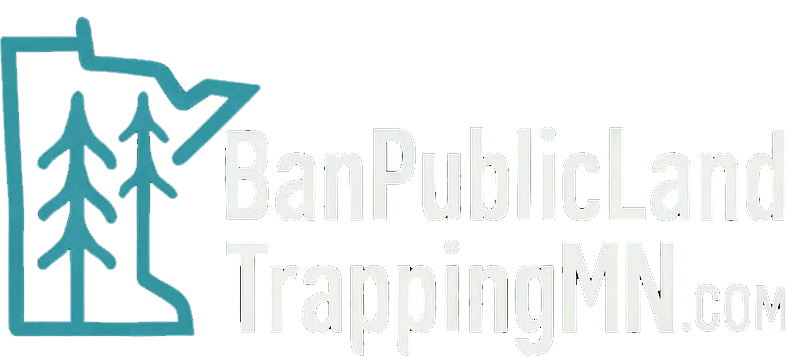Blog

By webmaster
•
November 11, 2025
At BanPublicLandTrappingMN.com , our mission is simple: to protect Minnesota’s public lands for people, pets, and wildlife alike. We believe that these shared spaces should be safe, ethical, and welcoming to all — not places where hidden steel traps endanger the very life we come to appreciate. This isn’t about being against hunters, trappers, or those who love the outdoors. It’s about drawing a fair and moral line between private activity and public responsibility.

By webmaster
•
October 23, 2025
It was supposed to be an ordinary winter walk—a crisp afternoon on a public trail, a loyal dog running ahead through the snow, nose to the ground, tail wagging with joy. But within seconds, everything changed. What should have been a peaceful outing turned into heartbreak when a hidden trap—a conibear—snapped shut.

By webmaster
•
October 2, 2025
Public lands in Minnesota belong to all of us. They are the places where families hike, children learn to love nature, and wildlife thrives freely. Yet hidden beneath this beauty lies a practice that endangers both animals and people alike—trapping. The time has come to end this outdated and dangerous activity on public lands once and for all. 1. Public Lands Are for Everyone, Not for Cruelty Minnesota’s public lands were established to preserve natural habitats and provide safe spaces for recreation and conservation—not for private profit or cruelty. Steel-jaw traps, snares, and body-gripping traps inflict severe pain and suffering on animals, often leaving them to die slowly from blood loss, starvation, or exposure. These devices do not discriminate; they capture anything unfortunate enough to step into them—pets, endangered species, and even birds of prey. Trappers often defend the practice as “tradition,” but tradition should never justify unnecessary cruelty. Our understanding of ecology and ethics has evolved, and our laws must evolve too. 2. Traps Endanger Pets and People Every year in Minnesota, beloved family dogs are injured or killed in traps set along public trails, near waterways, and even in popular recreation areas. Most of these traps are legally set and completely unmarked—meaning there’s no warning until it’s too late. For parents walking with children or dog owners enjoying the outdoors, the risk is invisible but real. It is unacceptable that public spaces meant for recreation also harbor hidden devices designed to maim and kill. 3. Trapping Disrupts Ecosystems Minnesota’s wildlife is an interconnected web. Removing key species like beavers, foxes, or coyotes through indiscriminate trapping disrupts natural balances that help control flooding, manage rodent populations, and support biodiversity. Beavers, for example, are nature’s engineers—creating wetlands that benefit hundreds of other species. When they are trapped for fur, the ecological benefits they provide disappear, leaving behind damaged habitats and altered waterways. 4. Economic and Ethical Alternatives Exist Trapping is often defended as an economic necessity, but in truth, the fur market is in decline. Trappers make relatively little profit compared to the environmental and moral costs of their actions. Eco-tourism, wildlife photography, and outdoor recreation generate far more revenue and jobs for Minnesota communities without harming a single animal. We can preserve tradition through wildlife stewardship and education—not through suffering. 5. The Majority of Minnesotans Support Wildlife Protection Polls consistently show that most Minnesotans oppose recreational and commercial trapping, especially on public lands. The public wants humane coexistence, not cruelty in the woods and wetlands we all share. Legislators should listen to their constituents and take action to align our policies with our values. Minnesota’s public lands should be sanctuaries, not killing fields. Banning trapping on these lands is not just an environmental issue—it’s a moral one. It’s about what kind of legacy we want to leave for future generations: one of cruelty and indifference, or one of compassion and respect for life.
